
Jean Baudrillard, in his philosophical travelogue America (1986), writes that “America ducks the question of origins; it cultivates no origin or mythical authenticity; it has no past and no founding truth. Having known no primitive accumulation of time, it lives in a perpetual present.” But we have only to turn to an American psychogeography to find traces of the displacement of America’s past and future alike. American time is buried time; it is intimately psychogeographical. Recall the Myth of the Mound Builders. Like a wight, American time lives out its unlife in the tomb world below, fearsome but forgotten. If you tore up the earth itself looking for the tell-tale heart that throbs, you’d find only tailings. There is a deep assignment or an unconscious operation at work here. The past and the future are both displaced into weird new registers: exotic landscapes, fantastic futures, fatal pasts. In this way, the temporal categories themselves are revealed precisely by means of their occlusion. In other words, American psychogeography sets up or structures a distinctly American temporality. American time is a painting of a stopped clock. The consumer society, the Map of the Empire, the perpetual present, the virtual plaza: all these psychogeographical figures are the labyrinthine ruins we inhabit, laughing ghouls and weeping jackals. Hence the sovereign illusion of a certain motionlessness is made into our manifest destiny, and a lack of agency gets written into the ruins themselves. It’s always been an error to think lost worlds belong to the deep past. North America was the first lost continent, in the modern sense, and it is lost in the fever dream of its own future, a future where its own past is relentlessly displaced so as better to avoid it. Imagine the uncanniness of viewing your own fossilized remains.
Time to start digging.
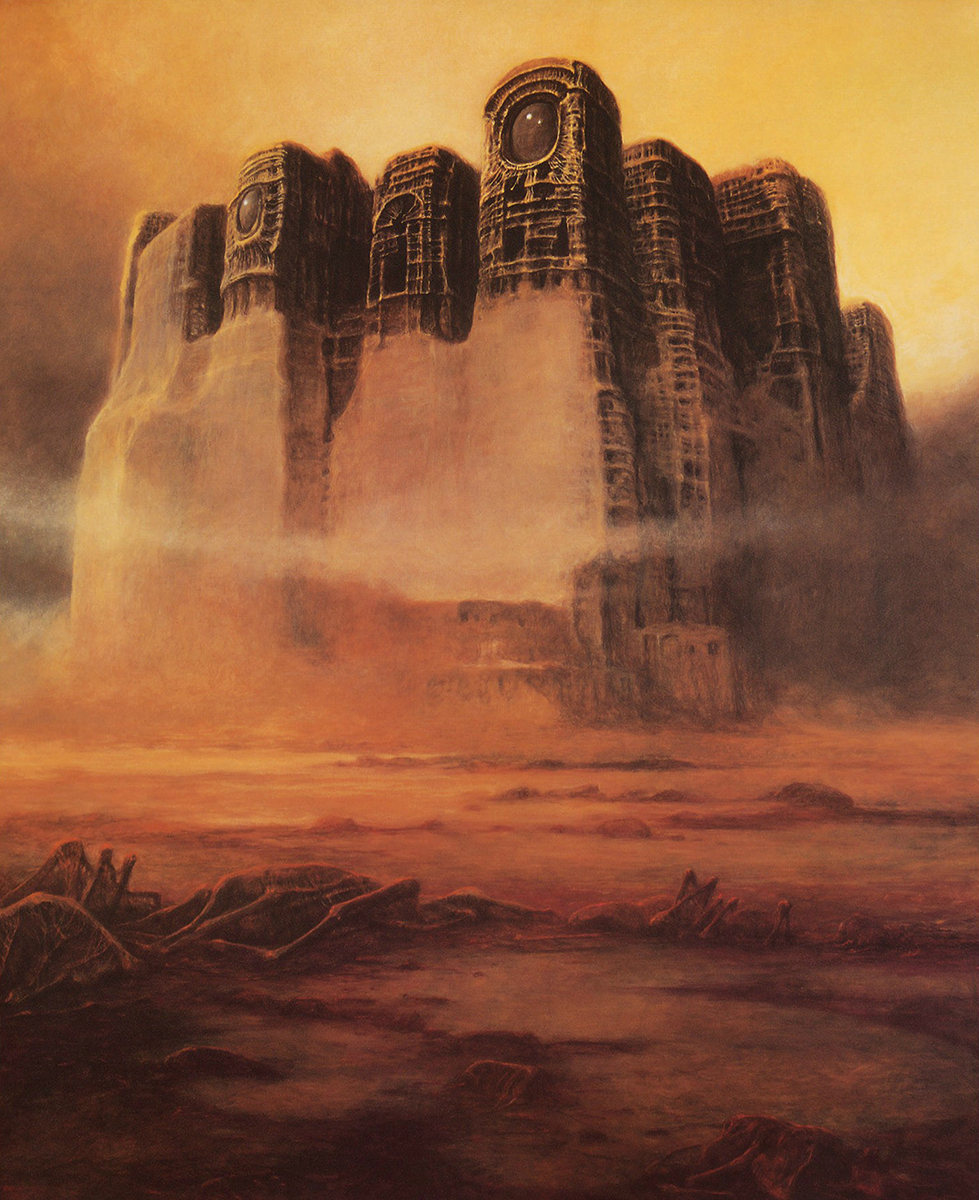
Welcome to sunny Zothique: “On Zothique, the last continent on Earth, the sun no longer shone with the whiteness of its prime, but was dim and tarnished as if with a vapor of blood. New stars without number had declared themselves in the heavens, and the shadows of the infinite had fallen closer. And out of the shadows, the older gods had returned to man […]” Invented by the idiosyncratic Californian poet and writer Clark Ashton Smith, contemporary and correspondent of Robert E. Howard and H. P. Lovecraft, the strange supercontinent of Zothique constitutes the last landscape of a dying earth, many millions of years in the deep future. It is littered with the artifacts and ruins of dead civilizations. It is peopled by symbolists and suicides, necromancers and their thralls, the remnants of a moribund and sorcerous humanity stained by its own excesses and doomed to decay. Smith is particularly relentless in his return to the sepulchral condition of Zothique’s sun: it is “coal-red and decadent,” “crimson,” “dim,” “ember-colored,” “faded,” “failing,” “a monstrous ember in a charred heaven,” “sable,” “senescent,” “sickly.” The sun itself is rotting. It bathes Zothique in red light, like a smoldering lamp. The conditions of possibility for sight are fading; the medium of visibility itself darkens. Plato’s Sun is drowning in a scabbing sea of viscous blood.
But the landscape of Zothique is also littered with false suns.
For example, in “The Weaver in the Vaults” (1934), three soldiers employed by a minor king are sent to the dead city of Chaon Gacca to find and retrieve the mummified remains of the king’s ancestor, the first of his line. Bearing an empty coffin into the land of dead, they locate the ruined palace amid the broken bones of the city. Descending into the catacombs beneath, they find all the royal mummies gone, at which point two of the soldiers die in a sudden collapse. The third soldier, Grotara, lays trapped under crumbled pillars, and he observes with horror as a baleful simulacrum of the sun rises up in that subterranean chamber from an abyssal crack in the stone floor. “A coldly shining, hueless globe […] had risen from the fissure and was hovering above it.” After it consumes the corpses of Grotara’s comrades, feeding off their essence, the new sun grows even further in size: “The globe had grown enormous. It was flushed with unclean ruby, like a vampire moon. From it, there issued palpable ropes and filaments, pearly, shuddering into strange colors, that appeared to fasten themselves to the ruined floor and walls and roof, like the weaving of a spider. […] Now the web had filled the entire tomb. It ran and glistened with a hundred changing hues, it dripped with glories drawn from the spectrum of dissolution.” Grotara is then consumed, as well, as the new sun feeds upon him.
Likewise, in “The Garden of Adompha” (1938), King Adompha builds a secret garden “roofed over against the sun with great sheets of lead and copper” so as to hide the fact that it is “illumined solely by a strange, fiery globe that hung in the mid-air at the center.” This subterranean sun “gave forth a sanguine light, in which the garden swam and weltered as if seen through a luminous mist of blood.” Adompha’s garden throngs with immense, strange plants, which bear grafts of human body parts transplanted there by Adompha’s dwarf sorcerer, Dwerulas. The secret garden is therefore a kind of torture garden, beautiful and hideous. “Thus were preserved the carefully chosen souvenirs of a multitude of persons who inspired [Adomphas and Dwerulas] with distaste or ennui. On palmy boles, beneath feathery-tufted foliage, the heads of eunuchs hung in bunches, like enormous black drupes. A bare, leafless creeper was flowered with the ears of delinquent guardsmen. Misshapen cacti were fruited with the breasts of women, or foliated with their hair. Entire limbs and torsos had been united with monstrous trees. Some of the huge salver-like blossoms bore palpitating hearts, and certain smaller blooms were centered with eyes that still opened and closed amid their lashes.” After Dwerulas aids Adomphas in transplanting the beautiful, slender hands of his favorite concubine, Adomphas murders him in a fit of disgust and suspicion. Afterward, he avoids the garden, until he can no longer resist the call of his dark lust. Upon returning to the sealed chamber, Adomphas is seduced by the “arboreal masquerade,” the “semi-animate floral forms that had been endowed by Dwerulas with the most provocative charms of women,” and his seduction culminates in his own death at the literal hands of his victims. “Over all, the sanguine globe blazed down with an ever-brightening and more baleful effulgence […]”
This transposition of suns generates a displacement of its own – and, as always, it is the structural process of displacement itself that reveals the most. In each case, the moribund sun that bathes the whole landscape of Zothique in a scarlet haze is occluded. The episodes in question take place behind barriers, underground. The occlusion of one sun makes possible the emergence of the new false suns, as if they were rising up from the black blazing world of geotrauma that grounds the world of visible forms. Smith explicitly reflects on this dynamic – this dynamic in which a radical new exteriority emerges from the interior, revealing that what is closest to us, in many respects, is the most alien, or alienated, and that we ourselves are both constituted and destroyed by such alien incursions. In an early description of Zothique, he describes it as “a continent of the far future […] more subject to incursions of outsideness than any former terrene realm.” As such, Smith effects a displacement that positions this outsideness far beyond the horizon of temporal accessibility. He does so precisely by constructing an alternative post-historical geography that throngs with ectopic specters, with lamias, monsters, and sorcerers, but he imprisons these figures on a dying earth, such that all historical atrocities or specificities are obscured behind the reddish fog of universal senescence. You could say it’s as if the future is haunted. If you exile the monstrosities of history and imprison them in the blasted landscape of an indefinitely deferred future state, then perhaps you’ll never have to face them directly. Instead, you can merely regard the manifold and pleasing distortions of their form. The brass bull sings a pretty tune, just as long as you never look inside it. And yet traces remain, however inscrutably, wherever they’re displaced, precisely in the form of those structural relations that constitute and evidence the movement of displacement as such. In other words, displacement leaves tracks. In this regard, the supercontinent of Zothique (in which, notably, all landscapes are jumbled together as if in the midst of a slow tectonic riot) makes manifest the dark labyrinth of an American psychogeography.
As with every labyrinth, a monster stalks its passages.
Consider “The Tomb Spawn” (1934). In the story, two merchants are separated from their trade caravan after an attack by desert ghouls, and, in their flight, they find themselves crawling through the crumbling wreckage of a long-dead city. There, they descend into a dark pit in search of water. To their horror, they discover their descent has placed them inside a charmed circle imprisoning an immense, strange monster. Legend holds that, many epochs prior, the king of the city had summoned the monster (“like a sun that came down by night upon the waste”) to be his occult adviser and his servant. The monster itself, Nioth Korghai, is a grand, sublime chimera, a patchwork of alien dreams. It resembles nothing so much as an imprisoned ophanim, or some hallucinogenic and Janus-faced monstrosity: “The urn-shaped torso was endowed with two heads. One of these heads was beaked like a cuttlefish and was lined with long oblique slits where the eyes should have been. The other head was that of an aged man dark and regal and terrible, whose burning eyes were like balas-rubies and whose grizzled beard had grown to the length of jungle moss.” We could easily characterize Smith’s tomb spawn as a uniquely American angel of history. Unlike Walter Benjamin’s vision of such a figure (which “would like to stay, awaken the dead, and make whole what has been smashed”), Nioth Korghai remains imprisoned forever in its tomb world, which Smith notably describes as a place “empty either of life or death.” For Benjamin, the storm of progress that blows in from Paradise “irresistibly propels [the angel of history] into the future to which his back is turned, while the pile of debris before him grows skyward.” For Smith, however, there can be no such storms underground, only dangerous intrusions into the silent kingdom by fools and wanderers, intrusions which necessarily end in dissolution for all. For it is not only the two merchants who perish. They do not perish at the claws of Nioth Korghai, but upon contact with the magic barrier “established to guard the vault forever.” There, on the boundary between the interior of the tomb (which once had functioned as a sacrificial chamber where “women and young warriors” were fed to the monster to repay it for its acumen) and its exterior, Nioth Korghai perishes as well, its funereal (“urn-shaped”) and teratoid form turned to ash by the impenetrable barrier.
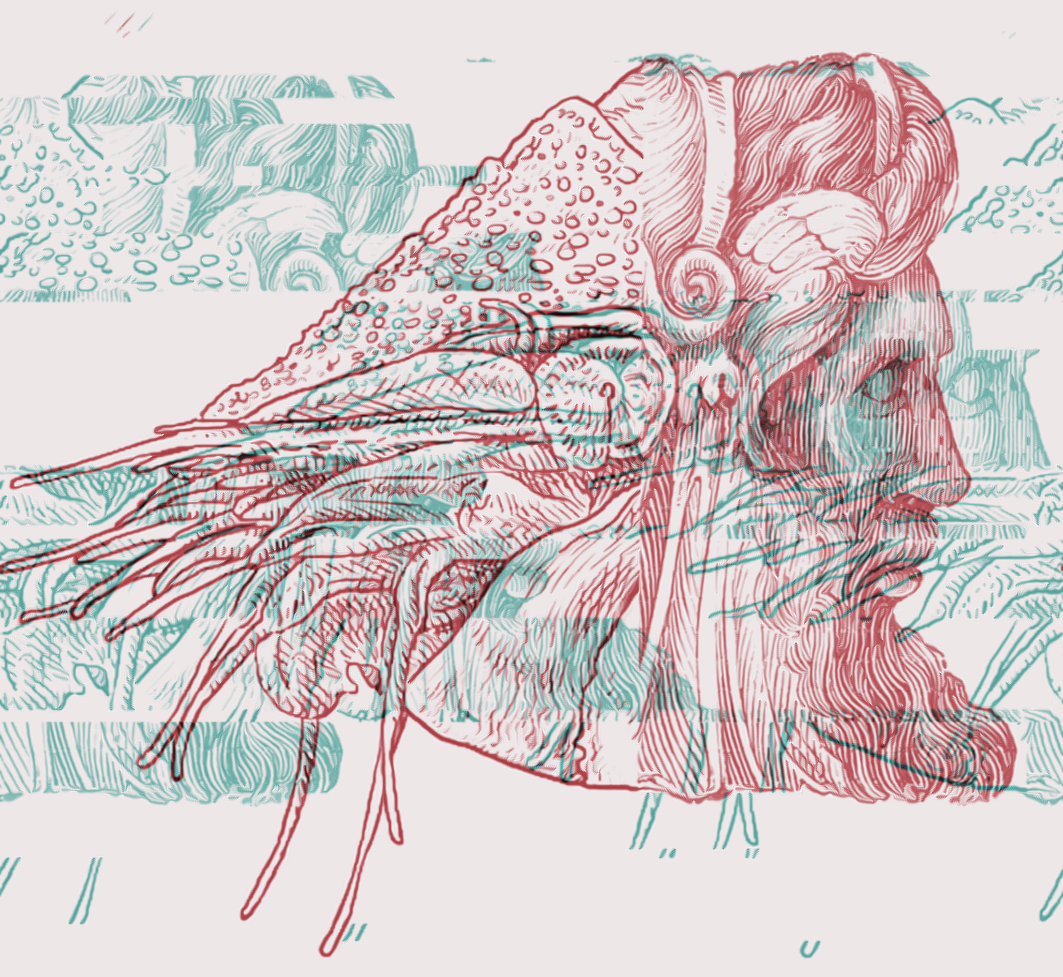
In a 1931 letter to Lovecraft, Smith expands upon his description of the landscape of Zothique, writing that it “will witness the intrusion of Things from galaxies not yet visible; and worse than this, a hideously chaotic breaking-down of dimensional barriers which will leave parts of our world in other dimensions, and vice versa. When things get to that stage, there will be no telling where even the briefest journey or morning stroll might end. The conditions will shift, too; so there will be no possibility of charting them and thus knowing when or where one might step off into the unknown” (emphasis mine). Compare this italicized passage to the original conception of the dérive, one of the core strategies available to the psychogeographer. For the Situationists, a dérive was a “technique of rapid passage through varied ambiances,” referring first and foremost to crabwise modes of traversing urban spaces, to the capacity for such traversals to disturb and displace the participants in the dérive, and to the revolutionary opportunities such uncanny traversals might open up within the order of things. (Recall here Thomas de Quincey’s search for a “north-west passage,” or Arthur Machen’s intense regard for the possibility that spatial disorientation can dislocate the navigator, thus enabling access to “the unknown world [that is] about us everywhere […]; the thinnest veil separates us from it, the door in the wall of the next street communicates with it.”) More concretely, then, a dérive can be loosely defined as an alternative mode of traversal, in which what gets traversed is the psychic landscape that ineluctably attends a material geography. It is an alternative mode of traversal precisely because it breaks with the standard assumptions regarding navigation. For, typically, in navigating, you read the landscape in order to determine various locations (e.g., your own location, points of reference, the desired destination), conditions (e.g., of passability, of visibility), and pathways forward. By contrast, a dérive intends to open up strange doorways where no doorways stand.
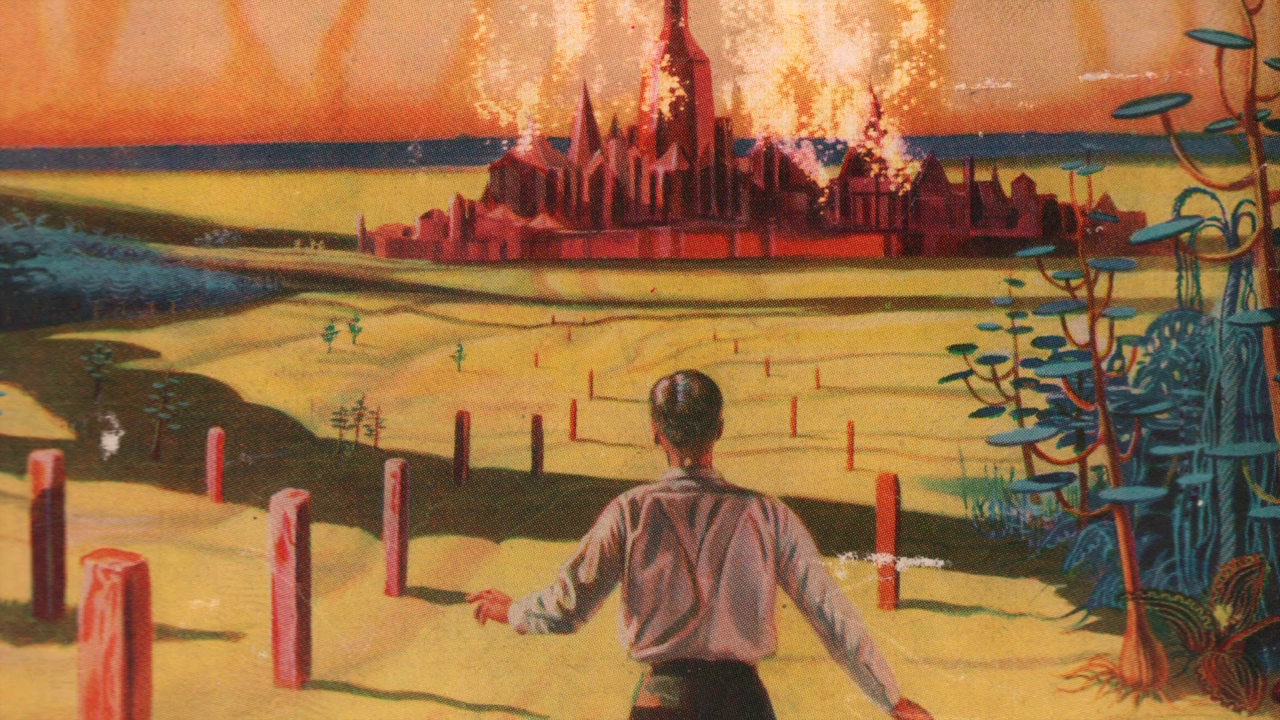
It seems as if, for Smith, such a possibility of opening the way may beckon, but it is ultimately only a seduction that leads necessarily to destruction, however ecstatic that destruction might be. For example, in “The City of the Singing Flame” (1931), Smith describes a doorway or portal discovered by an author, Giles Angarth, at Crater Ridge (now Boreal Ridge) in northern California. Angarth relates the landscape as “exceptionally bare and desolate,” filled with “the slag and refuse of Cyclopean furnaces, poured out in pre-human years […]” Among the stones are even further “stones that suggest the fragments of primordial bas-reliefs, or small prehistoric idols and figurines; and other that seem to have been graven with lost letters of an indecipherable script.” (Recall here Smith’s own carvings, which might as well be the virtual echoes of such stones.) Angarth’s doorway stands invisible, between two boulders shaped from a mineral “different from anything else in the neighborhood; and I conceived at once the weird, unwarrantable fancy that they might be the pedestals of vanished columns, worn away by incalculable years till there remained only these sunken ends.” Passing between the boulders, Angarth falls through a void, which transports him to a new dimension. He finds himself in a sunless alien landscape, with violet grass and a long, wide, snaking causeway that leads to a toweringly vast redstone city looming in the distance. Following the causeway, he enters the city, joining a throng of alien pilgrims (“I fear to describe them minutely; for human words would give the idea of something monstrous and uncouth and these beings are not monstrous but they have merely developed in obedience to the laws of another evolution than ours, the environmental forces and conditions of a different world”). The pilgrims, impelled by a sublime music, approach a grand shrine. Inside that shrine, a soaring flame sings, “pure as the central flame of a star,” filling the central chamber “with webs of intricate color, with swiftly changing arabesques whose numberless, unwonted hues and patterns were such as no mundane eye had ever beheld.” One by one, the pilgrims cast themselves into the singing flame, diving into the sacred fire at the heart of the alien city. Note how Smith balks. The passage from the landscape of desolation to the landscape of another world ends only in certain, albeit “glorious doom.”
It is useful here to contrast Angarth’s fateful journey with the wanderings of the nameless narrator in “The Abominations of Yondo” (1926), an important precursor story to Smith’s later Zothique cycle and, in fact, Smith’s very first weird tale. The story has little by way of plot, for it mostly consists of feverish descriptions of the bizarre landscape through which the narrator crawls after his abandonment by torturers – and his eager return to them after experiencing the terrors of that landscape. The narrator drags his “torture-weakened limbs” past “immense and immemorial cities lapsing shard by shard, atom by atom, to feed infinities of desolation,” over “vast rubbish-heaps that had once been mighty temples,” through “the bitter and ebbing dregs of some former sea.” In these places, he encounters horrors and monstrosities, “Things,” a wild spidergoat, grieving statues, empty suits of armor, a stalking shadow… He arrives at the end of the world, or perhaps of time itself: “as I toiled on, the sunlight altered strangely […] In that light, the entire waste, the rounded mountains, the serpentine hills, the lost cities, were drenched with phantasmal and darkening scarlet.” There, amidst the cities of the red night, he experiences a final encounter with an enigmatic lich, “some ancient king, still crowned with untarnished gold, but turning to my gaze a visage that more than time or the worm had wasted.” Faced with this undead king, the narrator flees. He flees “back, back forever, unthinking, unhesitating, to all the abominations I had left; back in the thickening twilight toward the nameless and sharded ruins, the haunted lake, the forest of evil cacti, and the cruel and cynical inquisitors of Ong who waited my return.” The contrast is marked, then. Where Angarth, upon discovering the secret flame, the false sun singer that sings the blood song electric, consigns himself to it in an ecstatic flare of self-destruction, the narrator in Yondo returns voluntarily to the familiar embrace of his torturers rather than face what the landscape holds.

Here we return to the displaced psychic landscape of an American psychogeography. We can trace the crooked leylines of our own milieu as easily as the fantastic and far-flung cartographies of Yondo and Zothique. Indeed, the landscapes overlap, like multiple strips of decaying film all snarled together. You can dive the eldritch strata, see the bones of the earth through layers of flickering occlusion. Fossil vampires stalk the depths, committing primal crimes. What you find, down there, is a register of the natural and psychic history of murder. From the Clovis hunters over 10,000 years ago (whose most recognizable artifacts are the remnants of their weapons) to the Zodiac Killer in the 1960s and 1970s (who defines the pseudo-mythic figure of the serial killer), such episodes provide us with occasions to reflect upon a contention made by William S. Burroughs: “America is not a young land: it is old and dirty and evil before the settlers, before the Indians. The evil is there waiting.” And it still is – long, long after all that, so far into the future the sun itself is stained scarlet and dying. Remember the sun only sets in the west; you can feel the heat closing in. There, on the last continent called Zothique, you might find a long-abandoned museum of the entirety of America itself. All the exhibits are covered with a thick fur of gray dust, and the arrayed remains of dead giants and megafauna and arcane machineries and peoples wear fineries of ash. They are locked in frozen combat, primeval conflict. The labels and literatures are all partial and peeling. Everywhere, there is a meaningless patchwork of runes: MAIZE and MONROE DOCTRINE, MANIFEST DESTINY and MORNING IN AMERICA […] THE SINGLE-BULLET THEORY […] I HAVE A DREAM […] MY FELLOW AMERICANS […] DESTROYER OF WORLDS […] OR GIVE ME DEATH. An errant wind could break the spell of silence. Even a footstep might cause an awakening. Then the telephone rings. You pick it up, pressing the brittle and dusty receiver to your ear. This is the Zodiac speaking… It’s just you and me now.
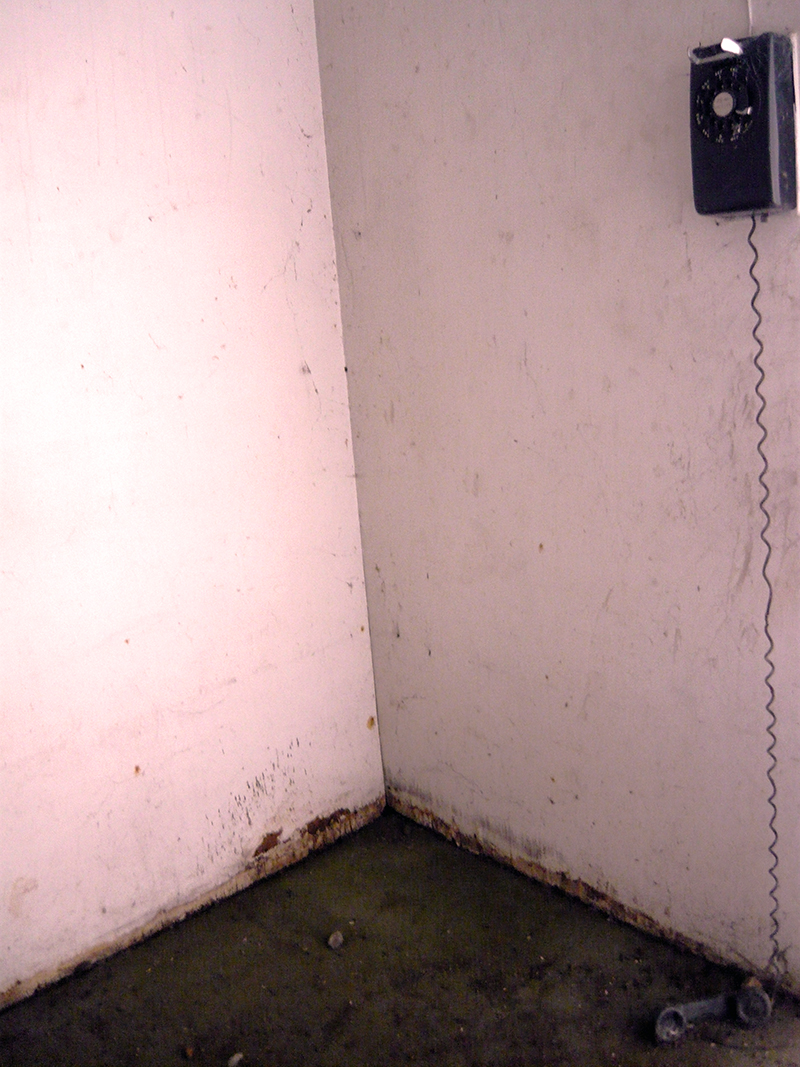
Indeed, murder has always been one of psychogeography’s ongoing obsessions. Consider only Thomas de Quincey’s satirical “On Murder Considered as one of the Fine Arts” (1827), on the Ratcliffe Highway murders; Iain Sinclair’s White Chappell, Scarlet Tracings (1987) and Alan Moore’s From Hell (1989-1999), on the Whitechapel murders; and James Ellroy’s beautiful, sprawling, vituperative examinations (in The Los Angeles Quartet [1987-1992] and the Underworld USA Trilogy [1995-2009]) of criminality in America as, effectively, an inherited and intractable feature of its landscape. The point here is not to lionize crime and murder (and much less the murderers themselves), but to employ these events and their psychic impact as a means of refracting and repurposing past and present, of trying to slip the shining wire. It is perhaps also worth noting that many of the murders invoked in psychogeographical writing are still unsolved. Jack the Ripper has never been conclusively identified, and the Black Dahlia case remains cold. Even in the Ratcliffe Highway murders, the prime suspect, John Williams, was never actually convicted due to his unexpected pre-trial suicide – although the ritual flagellation of his corpse and his unmarked burial at a crossroads with a stake in his heart certainly suggests otherwise.
In this spirit, then, take the Zodiac as one of the primordial figures of an American psychogeography.
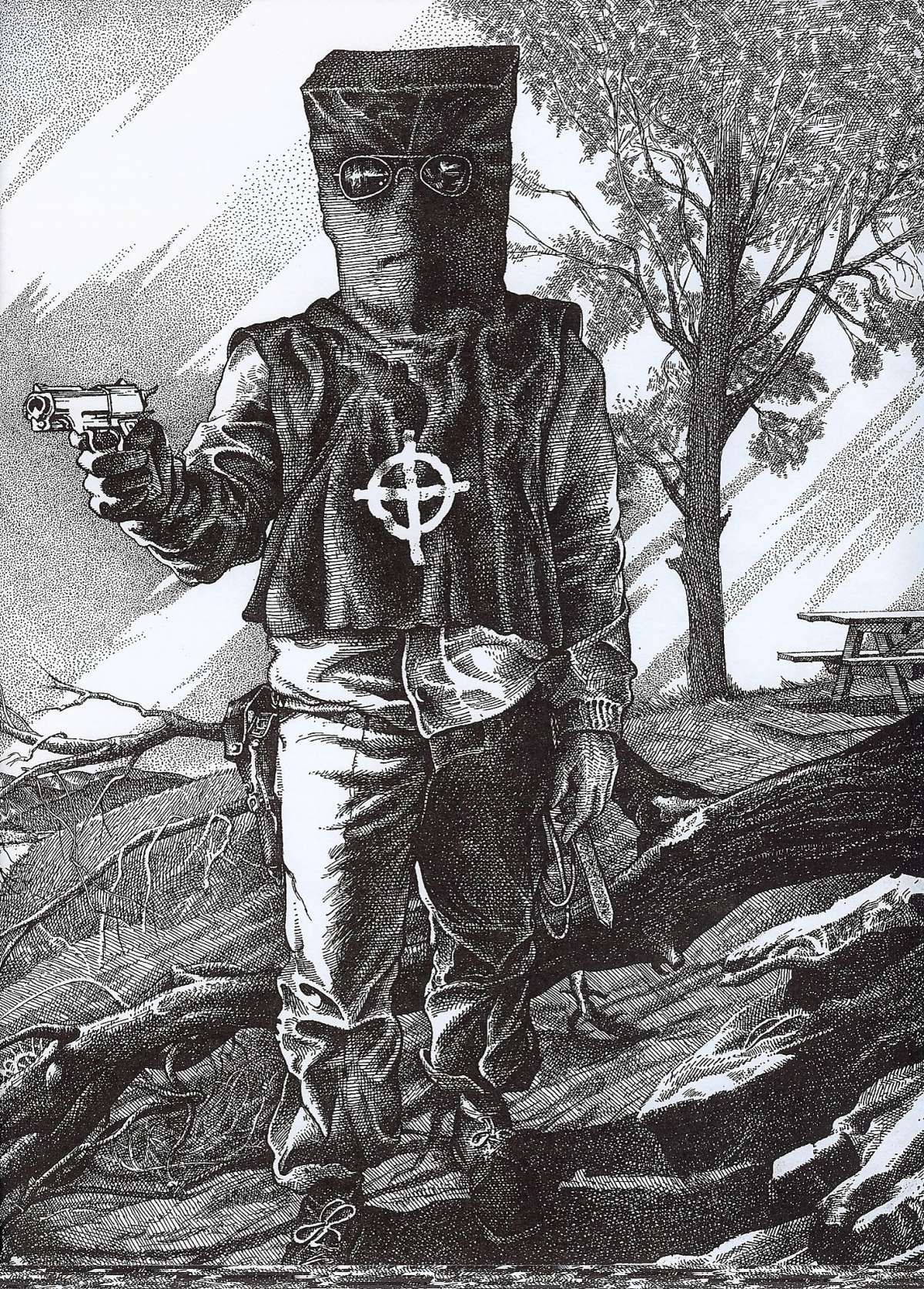
The fascination of the American public with the figure of the serial killer has been much remarked upon. In part, this is due to the paradoxical nature of this figure and how its paradoxes epitomize deep underlying tensions in our cultural unconscious. On the one hand, the serial killer is conceived as a darkly romantic figure. He constructs a private mythos using violence (a recurrent theme, if not the principal theme in American history); his victims are selected as necessary complements to the primal scene of a grim and absolute autonomy. On the other hand, everyone knows that serial killers are broken and compulsive individuals, relentlessly subject to cruel and terrible drives, driven by disorder. In this, however, they exemplify the ongoing difficulty of America’s perennial struggle to balance the complex, even contradictory relationship between individual pursuits and communitarian obligations. The serial killer therefore embodies a peculiar and extreme form of antisocial defection. (Arguably, the serial killer as such is a distinctly modern phenomena, although it is certainly true that mass murder in various guises has accompanied Homo sapiens since its earliest days [1], or possibly even since the dawn of its speciation. Nevertheless, a clear precedent for the figure of the serial killer can be found in the ancient figure of the werewolf – the loup garou, the wargus – which is to say, the monstrous, theriocephalic hybrid of human and animal which, by dint of being truly neither, is banned from the city without being able to make its proper home in the forest, either.) Of course, I am speaking less to the forensic realities at play in serial killings. An actual serial killer is only the id’s petty little triggerman. By contrast, the figure of the serial killer is a motile and many-faceted psychogeographic prism, a plague carrier of psychic disease, a vector of rat and wolf flows.
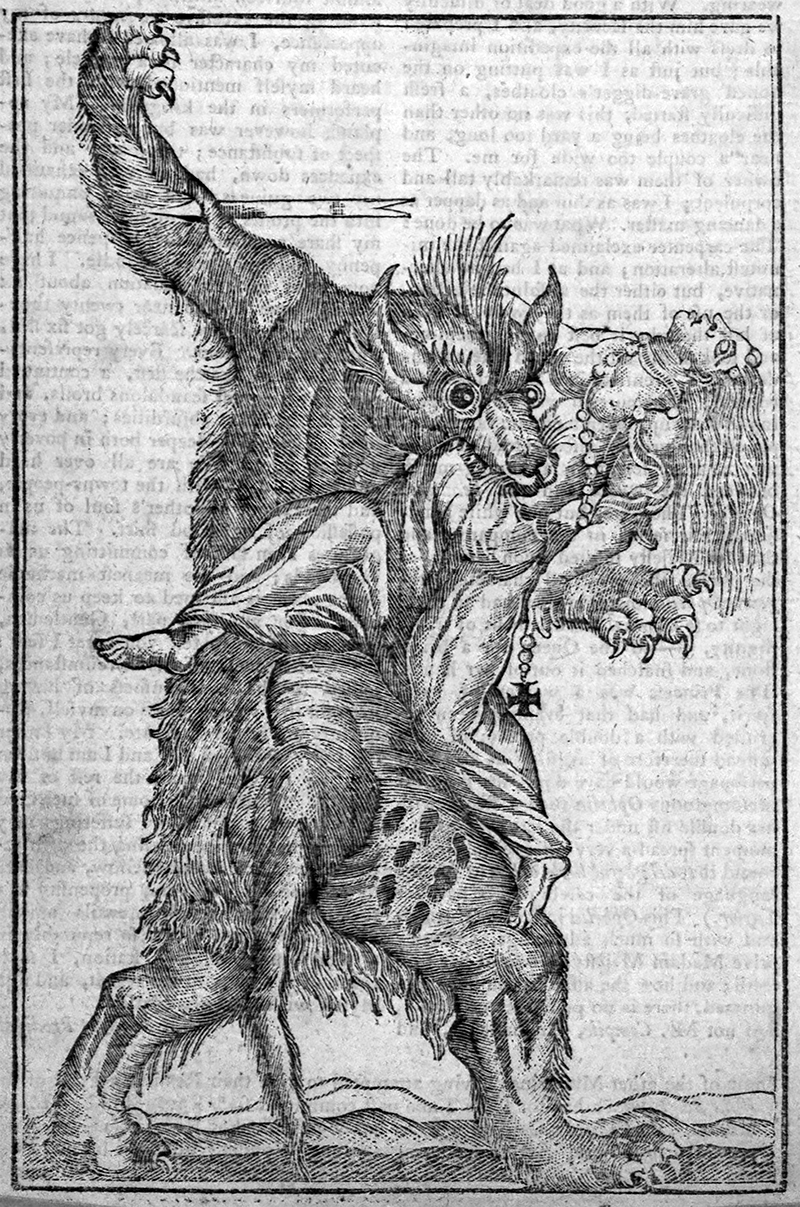
This is especially true for the Zodiac, precisely because this figure exists, now, as a historical cipher, a free-floating signifier of American violence, an epistemological black hole that pulls in investigators and their speculations alike without ever resolving itself into a known quantity. Even if the man behind the Zodiac killings were to be caught and convicted, the Zodiac would nevertheless remain at large. It is disconcerting when you realize this figure will haunt the landscape forever in an endless loop, even long after he’s been forgotten. There is a transposition of identities at work here, for the serial killer is always an ellipsis and a question mark. This is not because there is anything terribly mysterious about the stunted misanthropes and petty sadists behind actual serial killings, but, rather, because the figure of the serial killer is only a vehicle for displaced legacies of violence that cut through the strata of historical time. Serial killings are fractal murders. The seriality of serial killings is absolutely central, embodying as it does the mechanical compulsion to repeat, as if simply repeating an act of violence could somehow ever exhaust or exorcise it. Here we approach the foundational architectonic of American history as such: the idea that all it takes to fix something broken is to break it even further. Just do it again and again and again.
Like Jack the Ripper before him, the Zodiac can be described in terms of a sequence of media effects, once very frightening and real and now fainter, hauntological. These effects first took shape in the form of his ciphers, his letters, his threats, always delivered with a degree of bombast and malice intended to perpetuate a displaced and mediated image of himself as an inescapably omnipresent threat vector – the serial killer becomes ambient, like a landscape feature of the Bay Area itself. Consider how the Zodiac frames a prospective change in his methods (which started off, in a classic American style, as random shootings) in the November 9, 1969 letter: “I have grown rather angry with the police for their telling lies about me. So I shall change the way the collecting of slaves. I shall no longer announce to anyone. When I comitt my murders, they shall look like routine robberies, killings of anger, & a few fake accidents, etc.” You can see the Zodiac’s attempt to expand his sense of efficacy and self, as if to say, all deaths from now on can be attributed to me. He wants to displace his identity so fully that no one will ever be certain. Displacement – in this case, causal uncertainty, epistemological irresolution – is therefore not only a feature of the Zodiac killings as an unsolved crime, but a structural element of the crimes themselves. (Recall the degree to which, from nearly the start, the Zodiac takes credit for murders he almost certainly did not commit, e.g., Cheri Jo Bates, Robert Michael Salem, and others.)
Remixing Nicholas Meyer’s Time After Time (1979), it’s tempting to imagine the Zodiac falling or fleeing into the far future. He resides in Zothique now, a broken, lonely avatar of the American death drive. Take this image, the Zodiac in his ritual black hood, beating his fist against the steering wheel of a pale brown 1963 Corvair while the car shoots past some incomprehensible event horizon – and crash it into Smith’s “The Empire of the Necromancers” (1932), a tale the substance of which easily swallows up the deathly, inhuman imaginary of the serial killer. Recall the striking and terrible statement of the Zodiac’s July 31, 1969 cipher: “WHEN I DIE I WILL BE REBORN IN PARADISE AND ALL THE I HAVE KILLED WILL BECOME MY SLAVES.”
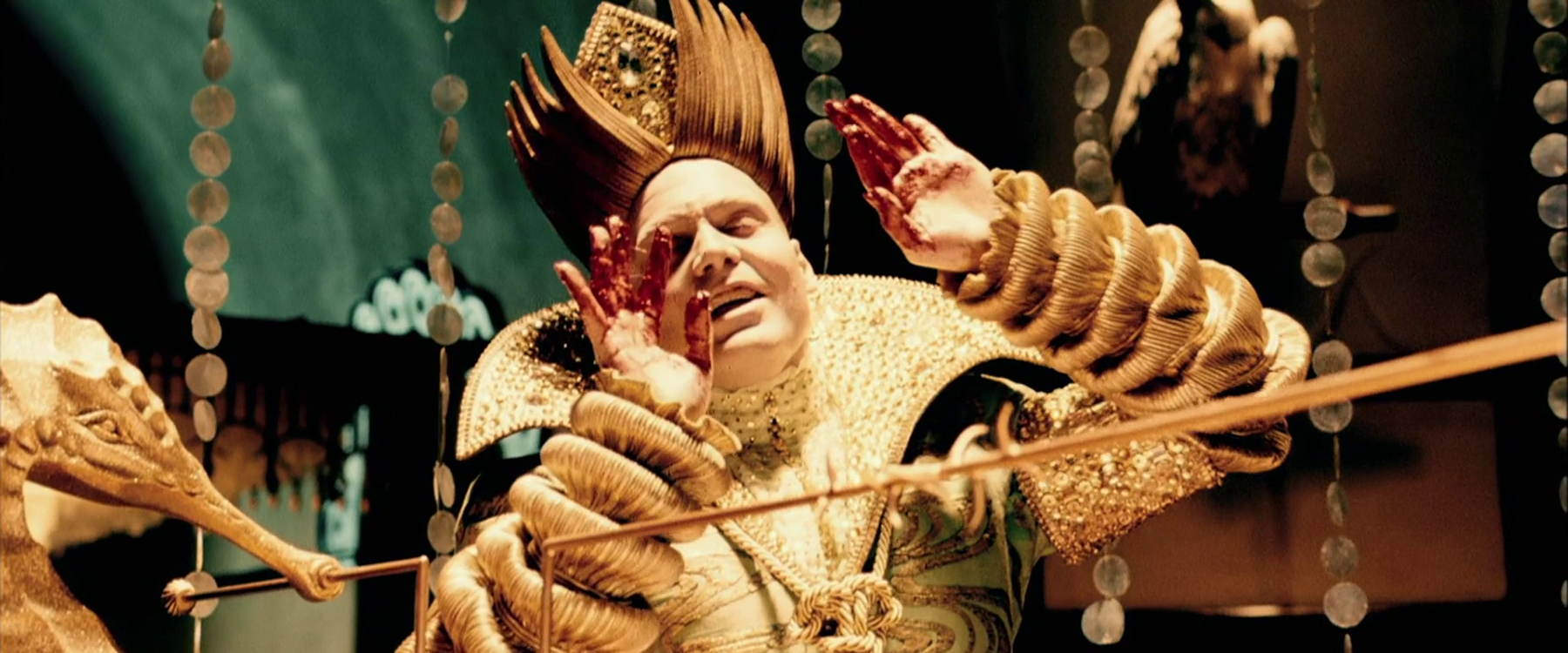
In Smith’s tale, two roaming necromancers find themselves in the ancient, sprawling ruins of Yethlyreom, the capital city of a dead empire. They find all the dead there, and “All these they raised up and called from sepulchral night to do their bidding.” Holding necropolitical dominion over a host of citizen corpses, “they exercised a baleful despotism. Tribute was borne to them by fleshless porters from outlying realms […] Dead laborers made their palace-gardens to bloom with long-perished flowers; liches and skeletons toiled for them in the mines, or reared superb, fantastic towers to the dying sun. […] Those that were fairest, whom the plague and the worm had not ravaged overmuch, they took for their lemans and made to serve their necrophilic lust.” In a version where the Zodiac stalks the dying earth, all the dead wear buttons emblazoned with the crosshair he used as his signature (just as he insists in the April 28th 1970 greeting card that San Francisco’s residents should do in order to prevent him from killing again). See there in the distance, spanning a dry canyon through which ashen winds scurry irregular and ragged, a red bridge standing jagged and shattered. Artifacts and twisted metal wreckage like the husks of dead insects are scattered about everywhere. The magic tyrant stands alone. Perhaps he likes to think of himself in terms of the opening lines of an old poem: “Bow down; I am the emperor of dreams / I crown me with the million-colored sun…” Tracing and retracing the pattern of his killings, the narcissist repeats private gibberish to himself until the universe winds down like old clockwork in an orrery.
He who has trod the shadows of Zothique
And looked upon the coal-red sun oblique,
Henceforth returns to no anterior land,
But haunts a later coast
Where cities crumble in the black sea-sand
And dead gods drink the brine.
In Smith’s story, eventually the dead fight back. In robes of sorrow, undead rebels assail the high estate. In “the nethermost vault below the imperial palace,” they find and shatter a graven image, which enables them to cast off the necromantic tyranny that binds them. And then they consign themselves to oblivion, to the final rest of genuine extinction. The slaves finally exit their captors’ dark and torturous paradise, leaving the defeated necromancers dismembered and powerless, unable to die.
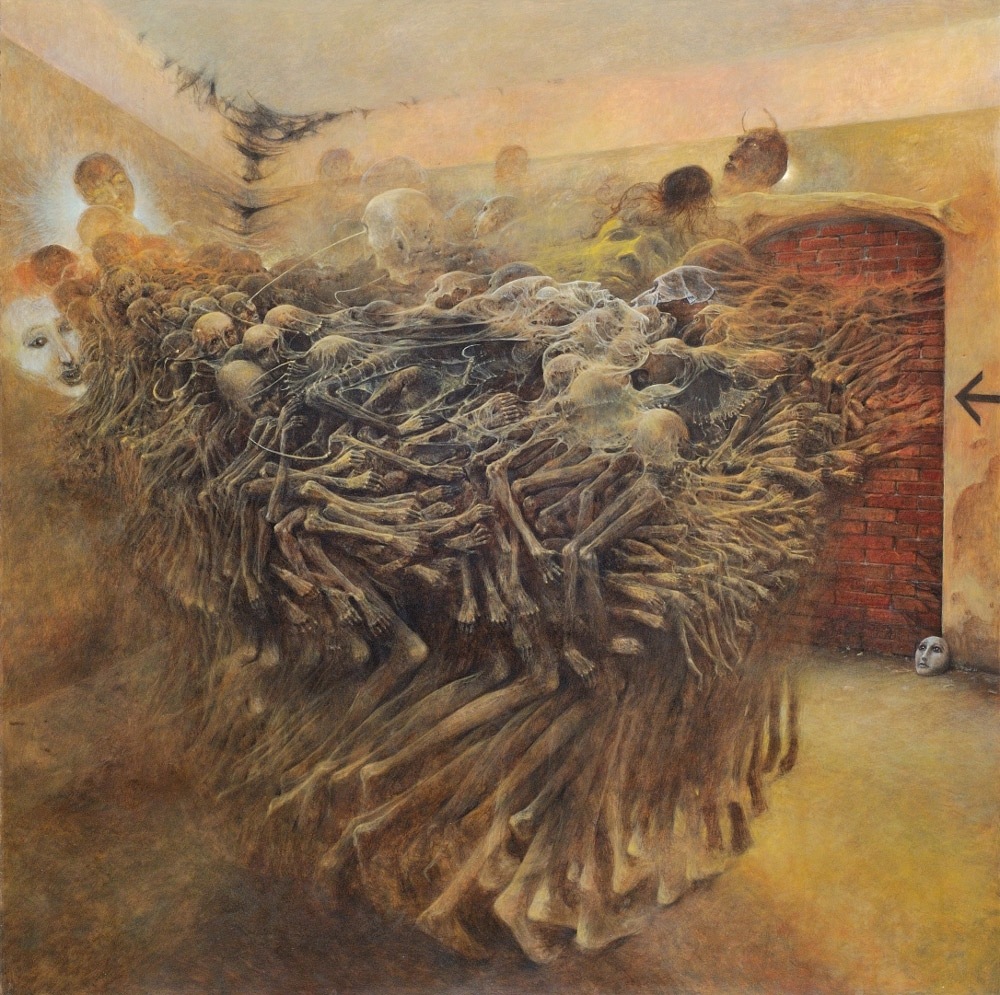
But it doesn’t have to be like this. “Does the angle between two walls have a happy ending?” Maybe. You could just step crabwise, following some strange dérive. Repurpose the vectors of Tindalos to new ends. If you can find an exit from the labyrinth of doors that is an American psychogeography, then perhaps another future might be possible for you. Find the right doorway standing crooked in the red desert – and open the way.
In 1912, long before his career as an author of weird tales begins, Clark Ashton Smith records the following “Account of an Actual Dream”:
I dreamt that the sun rose in the West, shortly after its usual setting. Its orb was strangely small, and red like a coal; and a film was upon its brightness, like the film on a glazing eye. It hung upon the horizon for a time, like the midnight sun of the North, and then climbed slowly to the zenith in a retrograde ascension. In a black sky, where the stars continued faintly visible, as in moonlight, it glowed and glowed, portentous with the red film which still enclosed it – a film not of the earth’s atmosphere but formed, I thought, by the condensing of vapors which rose from the sun’s molten surface to meet the infrigidation of space. Vertically overhead it hung, seeming to pause once more in its reverse and strangely troubled course. Then it began to flicker, and flared suddenly to a vast circumference of incandescent flame – spreading upon the blackness like an enormous dazzling white blot to many times its former size. Then all its fires shrank instantaneously back upon their center; and the sun went out – wiped from the face of the darkness as if by one sweep of a sponge. Appalment fell upon me with the strength of a swoon, and my heart seemed to suspend its beating with the heart of the sun. And my respiration grew troubled and irregular in the air that was suddenly thin and chill like the ether of space. And I seemed to sink and drown in the black suffocation of the shoreless and bottomless night. Then I awoke.
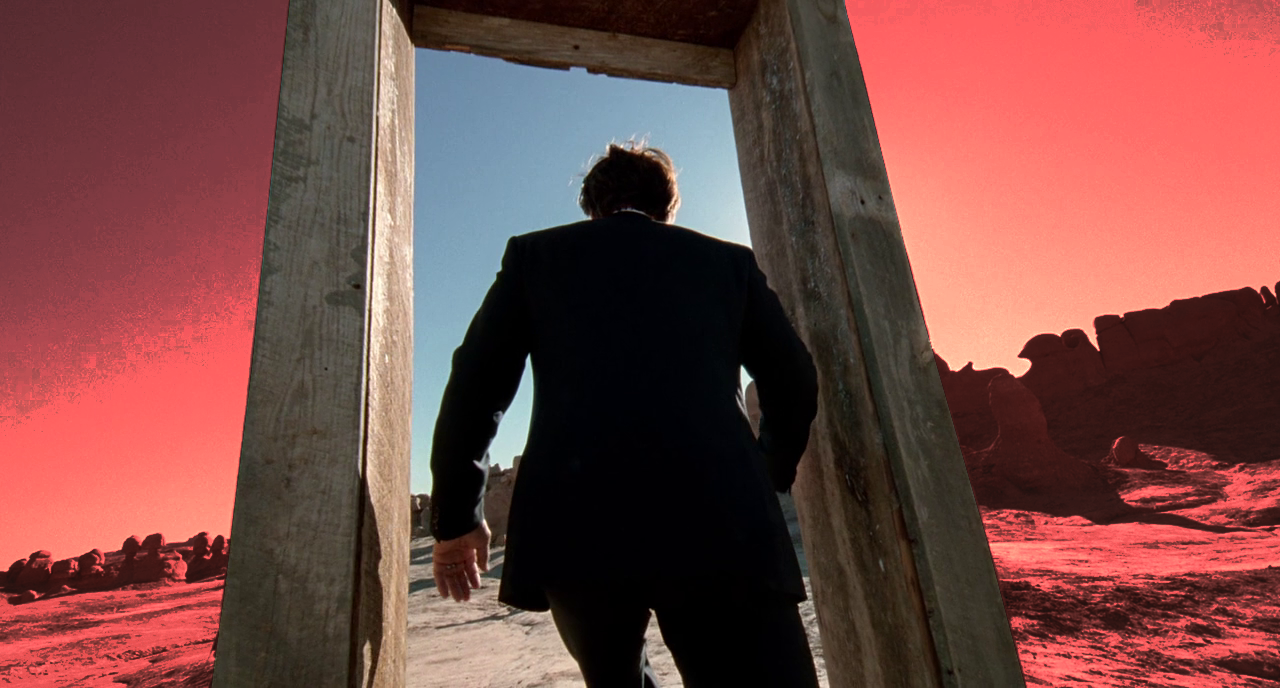
(For the previous two parts of this occasional series, see “Toward an American psychogeography (1): Hawksmoor/Winchester” and “Toward an American psychogeography (2): displacing Exham Priory.”)